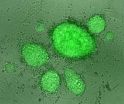(Press-News.org) NEW YORK, September 18, 2014 – Scientists at NYU Langone Medical Center have found a way to boost dramatically the efficiency of the process for turning adult cells into so-called pluripotent stem cells by combining three well-known compounds, including vitamin C. Using the new technique in mice, the researchers increased the number of stem cells obtained from adult skin cells by more than 20-fold compared with the standard method. They say their technique is efficient and reliable, and thus should generally accelerate research aimed at using stem cells to generate virtually any tissue. Stem cells are immature or uncommitted cells that are theoretically capable of becoming any cell type.
"This big boost in efficiency gives us an opportunity now to study stem cell programming mechanisms at high resolution," says Matthias Stadtfeld, PhD, assistant professor of cell biology and a member of the Skirball Institute of Biomolecular Medicine and the Helen L. and Martin S. Kimmel Center for Stem Cell Biology at NYU Langone Medical Center, who led the research.
"This is a very exciting advance," says Ruth Lehmann, PhD, director of the Kimmel Center for Stem Cell Biology and the Skirball Institute at NYU Langone and chair of the Department of Cell Biology. "The new technology developed by the Stadtfeld lab to reprogram differentiated cells efficiently and effectively brings the prospect of stem cell technology for safe use in regenerative medicine ever so much closer."
The standard method for reprogramming skin, blood, or other tissue-specific cell types into "induced pluripotent stem cells" (iPSCs) was reported in 2006 by the laboratory of Kyoto University's Shinya Yamanaka, who later won a Nobel Prize for the achievement. The method involves the artificial expression of four key genes dubbed OKSM (for Oct4, Klf4, Sox2 and myc) whose collective activity slowly prods cells into an immature state much like that of an early embryonic cell.
In principle, one could take a sample of cells from a person, induce the cells to become iPSCs, then multiply the iPSCs in a lab dish and stimulate them to mature towards desired adult cell types such as blood, brain or heart—which then could be used to replace injured or diseased tissue in that same individual.
But there are many formidable technical obstacles, among which is the low efficiency of currently used protocols. Converting most cell types into stable iPSCs occurs at rates of 1 percent or less, and the process can take weeks.
Researchers throughout the world have been searching for ways to boost this efficiency, and in some cases have reported significant gains. These procedures, however, often alter vital cellular genes, which may cause problems for potential therapies. For the new study, reported online today in Stem Cell Reports, Dr. Stadtfeld and his laboratory team decided to take a less invasive approach and investigate chemical compounds that transiently modulate enzymes that are present in most cells. "We especially wanted to know if these compounds could be combined to obtain stem cells at high efficiency," Dr. Stadtfeld says.
Two of these compounds influence well known signaling pathways, called Wnt and TGF-β, which regulate multiple growth-related processes in cells. The third is vitamin C (also known as ascorbic acid). Best known as a powerful antioxidant, the vitamin was recently discovered to assist in iPSC induction by activating enzymes that remodel chromatin—the spiral scaffold for DNA—to regulate gene expression.
Simon Vidal, a graduate student in the Stadtfeld lab, and Bhishma Amlani, a postdoctoral researcher, looked first at mouse skin fibroblasts, the most common cell type used for iPSC research. Adding to fibroblasts engineered to express OKSM either vitamin C, a compound to activate Wnt signaling, or a compound to inhibit TGF-β signaling increased iPSC-induction efficiency weakly to about 1% after a week of cell culture. Combining any two worked a bit better. But combining all three brought the efficiency to about 80 percent in the same period of time.
In another series of experiments the team worked with blood progenitor cells, which usually replace blood cells lost after injury or infection. The OKSM method on its own can slowly convert these cells to stem cells with up to 30 percent efficiency. Using OKSM together with the three compounds brought the efficiency to nearly 100 percent in less than a week. The researchers also achieved nearly 100-percent yield in mouse liver progenitor cells.
Dr. Stadtfeld expects that these dramatic increases in conversion rates of adult cells into embryonic-like stem cells will facilitate future studies of the iPSC induction process, simply by making that induction a more predictable event. "It's just a lot easier this way to study the mechanisms that govern reprogramming, as well as detect any undesired features that might develop in iPSCs," he said.
Vitamin C and the two compounds used to manipulate the Wnt and TGF-β pathways are widely studied and considered to have few unknown or hazardous effects, the researchers said. By contrast, the use of OKSM has in some cases caused undesired features in iPSCs, such as developmental defects. By making iPSC induction more rapid and efficient, though, Dr. Stadtfeld's new technique might also make the resulting stem cells safer. "Conceivably it reduces the risk of abnormalities by smoothening out the reprogramming process," Dr. Stadtfeld says. "That's one of the issues we're following up."
INFORMATION:
Other researchers who contributed to the study were Taotao Chen and Aristotelis Tsirigos. The study received support from the National Institute of Child Health and Human Development (R21HD079883-01), the National Institute of General Medical Sciences (1R01GM111852-01), The Helen Kimmel Foundation and the March of Dimes.
About NYU Langone Medical Center
NYU Langone Medical Center, a world-class, patient-centered, integrated academic medical center, is one of the nation's premier centers for excellence in clinical care, biomedical research, and medical education. Located in the heart of Manhattan, NYU Langone is composed of four hospitals — Tisch Hospital, its flagship acute care facility; Rusk Rehabilitation; the Hospital for Joint Diseases, the Medical Center's dedicated inpatient orthopaedic hospital; and Hassenfeld Children's Hospital, a comprehensive pediatric hospital supporting a full array of children's health services across the Medical Center — plus the NYU School of Medicine, which since 1841 has trained thousands of physicians and scientists who have helped to shape the course of medical history. The Medical Center's tri-fold mission to serve, teach, and discover is achieved 365 days a year through the seamless integration of a culture devoted to excellence in patient care, education, and research. For more information, go to http://www.NYULMC.org, and interact with us on Facebook, Twitter, and YouTube.
NYU Langone scientists report reliable and highly efficient method for making stem cells
New finding could accelerate research to regenerate damaged tissue
2014-09-18
ELSE PRESS RELEASES FROM THIS DATE:
The war on leukemia: How the battle for cell production could be decisive
2014-09-18
A key step in understanding the nature of the fight for superiority between mutated genes and normal genes could lead to new therapies to combat leukaemia, say researchers from the University of Birmingham and Newcastle University.
The study, published in Cell Reports, investigated Acute Myeloid Leukaemia to understand why leukemic cells are not able to develop normally into mature blood cells.
Stem cells in the bone marrow generate billions of different blood cells each day. The process resembles a production line with genes acting as regulators to control each step ...
NASA sees Hurricane Edouard enter cooler waters
2014-09-18
VIDEO:
On Sept. 17 at 03:39 UTC, the TRMM satellite saw a newer outer eyewall forming around Edouard's original eyewall creating a double eye-wall structure. Red indicates heavy rainfall....
Click here for more information.
NASA's Tropical Rainfall Measuring Mission or TRMM satellite and Aqua satellite gathered data on Hurricane Edouard's rainfall, clouds and waning power is it continued moving northward in the Atlantic into cooler waters. On Sept. 18, NASA's Global Hawk #872 ...
Scientists find how mysterious 'circular RNA' is formed, claim muscular dystrophy link
2014-09-18
Our genetic information is stored in DNA, tiny strands of nucleic acid that contain instructions for the functioning of our bodies. To express this genetic data, our DNA is copied into RNA molecules, which then translate the instructions into proteins that perform tasks in our cells.
Several years ago, scientists discovered a new type of RNA molecule. Unlike all other known RNAs, this molecule is circular, and was labeled circular RNA. Although circRNA molecules are abundant, little has been known about how they are produced. Moreover, little has been known about the ...
Flu vaccine for expectant moms a top priority
2014-09-18
WHITE PLAINS, NY, SEPT. 18, 2014 -- Only about half of all pregnant women in the U.S. get a flu shot each season, leaving thousands of moms-to-be and their babies at increased risk of serious illness.
"Getting a flu shot should be a routine part of prenatal care," said Edward McCabe, MD, March of Dimes chief medical officer. "Health care providers should offer their pregnant patients a flu shot each year and if they don't, then women should ask for it."
A report by the U.S. Centers for Disease Control and prevention presented today by the National Foundation for ...
New high-resolution satellite image analysis: 5 of 6 Syrian World Heritage sites 'exhibit significant damage'
2014-09-18
SEPTEMBER 18 —In war-torn Syria, five of six World Heritage sites now "exhibit significant damage" and some structures have been "reduced to rubble," according to new high-resolution satellite image analysis by the nonprofit, nonpartisan American Association for the Advancement of Science (AAAS).
The AAAS analysis, offering the first comprehensive look at the extent of damage to Syria's priceless cultural heritage sites, was completed in partnership with the University of Pennsylvania Museum of Archaeology and Anthropology's Penn Cultural Heritage Center (PennCHC) and ...
NASA marks Polo for a hurricane
2014-09-18
Hurricane Polo still appears rounded in imagery from NOAA's GOES-West satellite, but forecasters at the National Hurricane Center expect that to change.
NOAA's GOES-West satellite captured data on Hurricane Polo on Sept. 18 at 10:15 a.m. EDT. An image using that data was created by the NASA/NOAA GOES Project at NASA's Goddard Space Flight Center in Greenbelt, Maryland. The image showed thunderstorms wrapping tightly around the center of the storm while one broken band of thunderstorms extended to the northwest, while the other appeared on the eastern side of the center ...
New Dartmouth smartphone app reveals users' mental health, performance, behavior
2014-09-18
Dartmouth researchers and their colleagues have built the first smartphone app that automatically reveals students' mental health, academic performance and behavioral trends. In other words, your smartphone knows your state of mind -- even if you don't -- and how that affects you.
The StudentLife app, which compares students' happiness, stress, depression and loneliness to their academic performance, also may be used in the general population – for example, to monitor mental health, trigger intervention and improve productivity in workplace employees.
"The StudentLife ...
Fall foliage season may be later, but longer on warmer Earth
2014-09-18
The fall foliage season that prompts millions of Americans to undertake jaunts into the countryside each year could come much later and possibly last a little longer within a century, according to new research.
Climate change could postpone fall leaf peeping in some areas of the United States as summer temperatures linger later into the year, Princeton University researchers report in the journal Global Ecology and Biogeography. For instance, the paper birch — a popular foliage tree that is the state tree of New Hampshire — could change color one to three weeks later ...
Want to link genes to complex traits? Start with more diversity
2014-09-18
Life is rarely simple. From crop yields to disease risks, the biological characteristics people care most about are usually those considered "complex traits." Just as for height—the textbook example of a complex trait—attributes like risk for a particular human disease are shaped by multiple genetic and environmental influences, making it challenging to find the genes involved. To track down such genes, geneticists typically mate two individuals that differ in key ways—for example, a large mouse and a small mouse—and then study their descendents, looking for genes that ...
Americans rate losing eyesight as having greatest impact on their lives
2014-09-18
ALEXANDRIA, Va.—Sept. 18, 2014—Many Americans across racial and ethnic groups describe losing eyesight as potentially having the greatest impact on their day-to-day life, more so than other conditions including: loss of limb, memory, hearing and speech (57% of African-Americans, 49% of non-Hispanic whites, 43% of Asians and 38% of Hispanics). When asked which disease or ailment is the worst that could happen to them, blindness ranked first among African-Americans followed by AIDS/HIV. Hispanics and Asians ranked cancer first and blindness second, while Alzheimer's disease ...
LAST 30 PRESS RELEASES:
Study reveals emotional turmoil experienced after dog-theft is like that of a caregiver losing a child
PhRMA Foundation awards $1M for equity-focused research on digital health tools
Women with heart disease are less likely to receive life-saving drugs than men
How electric vehicle drivers can escape range anxiety
How do birds flock? Researchers do the math to reveal previously unknown aerodynamic phenomenon
Experts call for global genetic warning system to combat the next pandemic and antimicrobial resistance
Genetic variations may predispose people to Parkinson’s disease following long-term pesticide exposure, study finds
Deer are expanding north, and that’s not good for caribou
Puzzling link between depression and cardiovascular disease explained at last: they partly develop from the same gene module
Synthetic droplets cause a stir in the primordial soup
Future parents more likely to get RSV vaccine when pregnant if aware that RSV can be a serious illness in infants
Microbiota enterotoxigenic Bacteroides fragilis-secreted BFT-1 promotes breast cancer cell stemness and chemoresistance through its functional receptor NOD1
The Lundquist Institute receives $2.6 million grant from U.S. Army Medical Research Acquisition Activity to develop wearable biosensors
Understanding the cellular mechanisms of obesity-induced inflammation and metabolic dysfunction
Study highlights increased risk of second cancers among breast cancer survivors
International DNA Day launch for Hong Kong’s Moonshot for Biology
New scientific resources map food components to improve human and environmental health
Mass General Brigham research identifies pitfalls and opportunities for generative artificial intelligence in patient messaging systems
Opioids during pregnancy not linked to substantially increased risk of psychiatric disorders in children
Universities and schools urged to ban alcohol industry-backed health advice
From Uber ratings to credit scores: What’s lost in a society that counts and sorts everything?
Political ‘color’ affects pollution control spending in the US
Managing meandering waterways in a changing world
Expert sounds alarm as mosquito-borne diseases becoming a global phenomenon in a warmer more populated world
Climate change is multiplying the threat caused by antimicrobial resistance
UK/German study - COVID-19 vaccine effectiveness and fewer common side-effects most important factors in whether adults choose to get vaccinated
New ultraviolet light air disinfection technology could help protect against healthcare infections and even the next pandemic
Major genetic meta-analysis reveals how antibiotic resistance in babies varies according to mode of birth, prematurity, and where they live
Q&A: How TikTok’s ‘black box’ algorithm and design shape user behavior
American Academy of Arts and Sciences elects three NYU faculty as 2024 fellows
[Press-News.org] NYU Langone scientists report reliable and highly efficient method for making stem cellsNew finding could accelerate research to regenerate damaged tissue




